Distribution Records
PDF
Vetting Levels |
|
Adult phenology:
High Mountains (HM) ≥ 4,000 ft.
Low Mountains (LM) < 4,000 ft.
Piedmont (Pd)
Coastal Plain (CP)
Click on graph to enlarge
|
 |
|
| synonym | |
| taxonomic_comments |
Hadrobunus currently comprises four species that occur in North America north of Mexico (Cokendolpher and Lee, 1993; Shultz, 2010, 2012). However, Shultz (2010, 2018) and Burns et al. (2012) note that several undescribed species exist and that Leiobunum formosum will be tranferred to Hadrobunus based on genetic analysis. Only Hadrobunus maculosus and H. fusiformis have so far been documented in North Carolina (L. formosum has one old record from Wake County). |
| species_comment |
In Shultz's 2012 review of Hadrobunus grandis, true grandis was described as restricted to Peninsular Florida and north in the Coastal Plain to southern South Carolina. Specimens from North Carolina northward previously identified as grandis are now believed to represent H. maculosus instead. One exception, however, is Banks' record for grandis from the Swannanoa River valley near Black Mountain, which Shultz indicated might represent H. fusiforms in his 2010 description of that species. We have accordingly moved the Buncombe County record to Hadrobunus unidentified species account; the rest are now treated as maculosus. |
| id_comments |
A large, short-legged harvestman. Color varies from reddish brown to darker grayish brown. Shultz (2012) describes the coloration in Maryland populations as changing seasonally: early summer individuals have a light brown ground color with highly contrasting markings, rows of prominent spots, and distinct banding on the legs; late season individuals are much darker and have a much less constrasting pattern. The undersurface, including the coxae, are ivory. The pedal trochanters and the femur and patella of the palps are mottled dark and pale. The front margin of the carapace also has contrasting dark markings and a dark central figure is present in at least the early season forms. |
| total_length |
~10 mm (Shultz, 2018) |
| structural_features |
The body is relatively large but the legs are short, with the femur of the first leg shorter than the body (Shultz, 2018). The scutum of the abdomen is composed of six segments and is covered with minute, black, backward-pointing denticles. The genital operculum is distinctive in both sexes (see illustrations and descriptions in Shultz, 2012, 2018). In males, the anterior edge is indented, which can be seen in externally. The abdomen is bluntly rounded rather than fusiform, as it is in H. fusiformis. |
| silk_web |
|
| fld_guide_descriptions |
|
| online_photos |
BugGuide, The Harvestmen of Maryland |
| prey |
We have observed Hadrobunus to prey on insects as large as crane flies |
| predators |
|
| behavior |
|
| distribution_reference |
Shultz (2010) lists a record made in 1935 by H.K. Wallace in Burlington |
| technical_reference |
Shultz (2018) |
| adult_id | 1 identifiable by photo 2 identifiable by photo of specific features and/or supplementary info 3 identifiable from specimen only |
| abundance |
We currently have too few records to estimate either its frequency of occurrence or abundance in North Carolina |
| distribution_comments |
Currently, our records come from the Piedmont and Inner Coastal Plain; Shultz (2018) states that it ranges into western North Carolina. It seems likely that it will be documented statewide. |
checklist_mt_high
>=4,000 ft. | |
checklist_mt_low
<4,000 ft. | |
checklist_pd
Piedmont | |
checklist_cp
Coastal Plain | |
| habitat |
Shultz (2018) describes the habitat for this species as including "open or broken woodlands and adjacent non-wooded areas, including agricultural fields; less abundant in mature forests." |
| observation_methods |
"Adults largely nocturnal, found under loose objects on the ground during the day" (Shultz, 2018) |
| state_protection |
Arachnids are not protected under state law, although permits are needed to collect them in State Parks and other public and private nature preserves |
| NHP_ranks |
[GNR] [S5] |
| NHP_status |
|
| status_comments |
This species probably occurs across most of the state and appears to be fairly generalized in terms of its habitat use. Although we still have few records for this species, we believe it is secure within the state. |
Photo Gallery for Hadrobunus maculosus No common name |
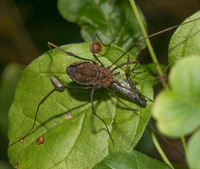 | Recorded by: David George and Steve Hall
Chatham Co.
Comment: | 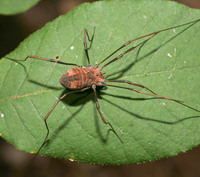 | Recorded by: David George and Steve Hall
Chatham Co.
Comment: |
 | Recorded by: Stephen Hall
Chatham Co.
Comment: | 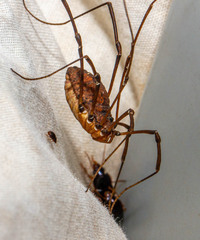 | Recorded by: Steve Hall and Bo Sullivan
Moore Co.
Comment: Seen at moth sheet |
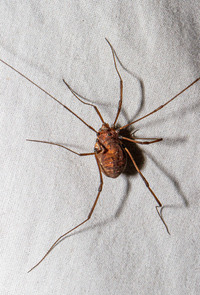 | Recorded by: Steve Hall and Bo Sullivan
Moore Co.
Comment: Seen at moth sheet | 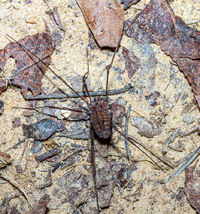 | Recorded by: Steve Hall
Durham Co.
Comment: Seen at the edge of the forest |
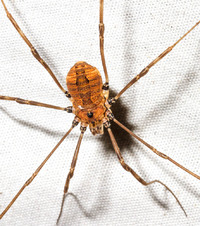 | Recorded by: Steve Hall
Orange Co.
Comment: Seen at moth sheet | 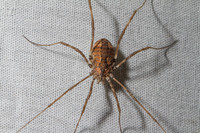 | Recorded by: Steve Hall
Orange Co.
Comment: |
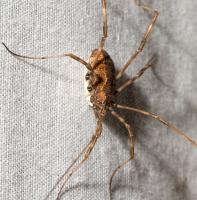 | Recorded by: Steve Hall
Orange Co.
Comment: | 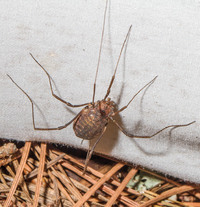 | Recorded by: Steve Hall
Orange Co.
Comment: |
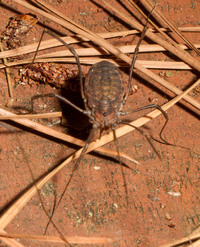 | Recorded by: Steve Hall
Orange Co.
Comment: | 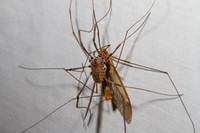 | Recorded by: Steve Hall
Stokes Co.
Comment: Abundant. Came well to beer-banana bait and also seen on the ground, tree trunks, buildings, and at a moth sheet |
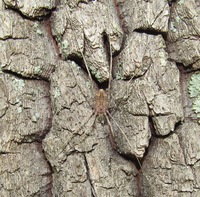 | Recorded by: Brian Bockhahn
Stokes Co.
Comment: | 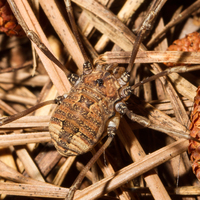 | Recorded by: Steve Hall
Orange Co.
Comment: Female found at base of moth sheet. Initially, the abdomen appeared hightly truncated but apparently due to dehydration; after given water in captivity, the abdomen re-expanded into a rounded shape |
 | Recorded by: Steve Hall
Orange Co.
Comment: Female found at base of moth sheet. Initially, the abdomen appeared hightly truncated but apparently due to dehydration; after given water in captivity, the abdomen re-expanded into a rounded shape |  | Recorded by: Steve Hall
Orange Co.
Comment: Female found at base of moth sheet. Initially, the abdomen appeared hightly truncated but apparently due to dehydration; after given water in captivity, the abdomen re-expanded into a rounded shape |
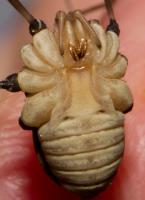 | Recorded by: Steve Hall
Orange Co.
Comment: Female found at base of moth sheet. Initially, the abdomen appeared hightly truncated but apparently due to dehydration; after given water in captivity, the abdomen re-expanded into a rounded shape |  | Recorded by: Steve Hall
Orange Co.
Comment: |
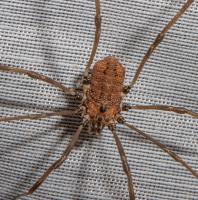 | Recorded by: Steve Hall
Orange Co.
Comment: |  | Recorded by: Steve Hall
Orange Co.
Comment: |
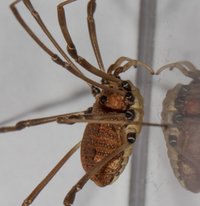 | Recorded by: Steve Hall
Orange Co.
Comment: |  | Recorded by: Steve Hall
Orange Co.
Comment: |
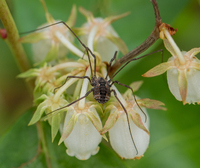 | Recorded by: Steve Hall
Moore Co.
Comment: |